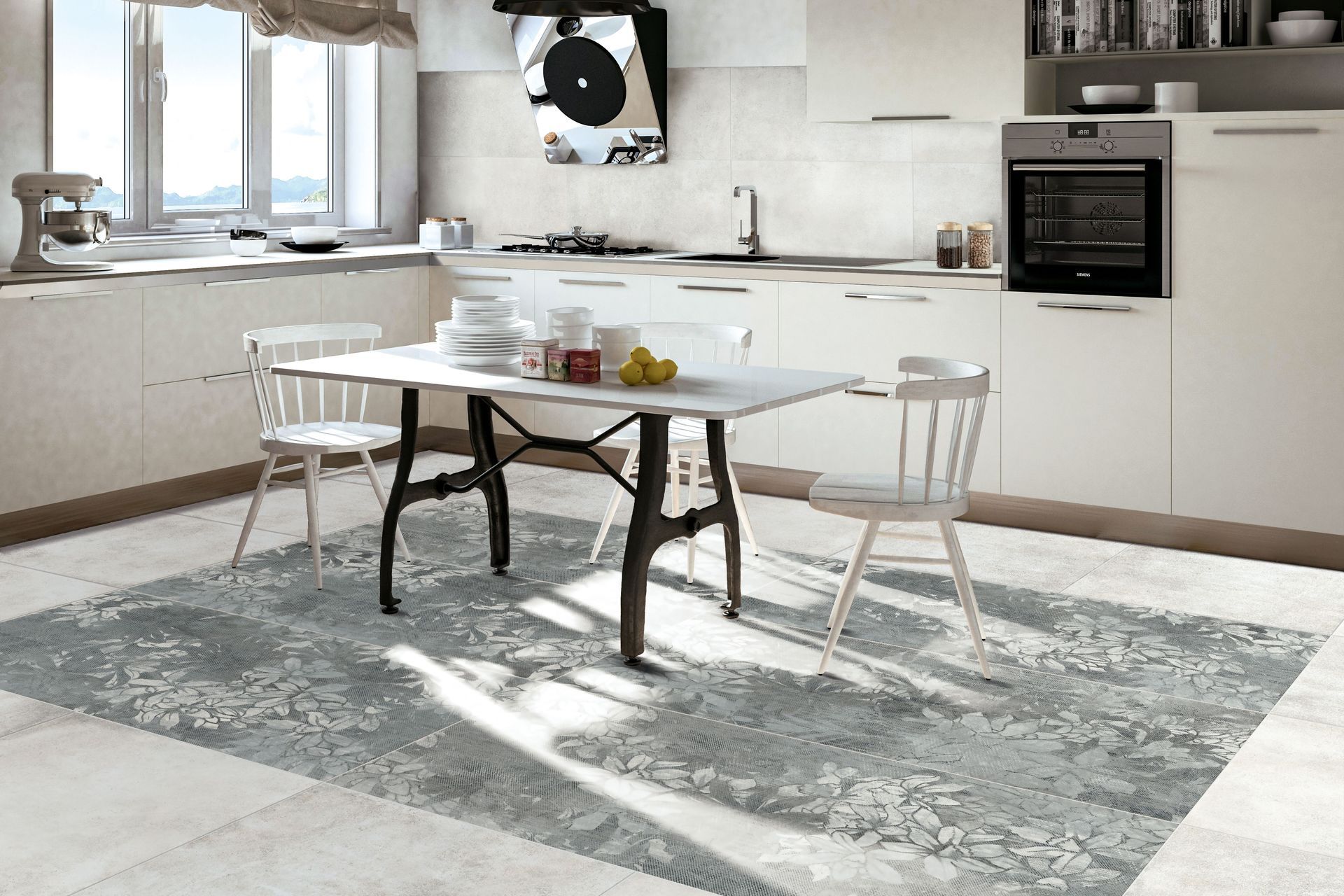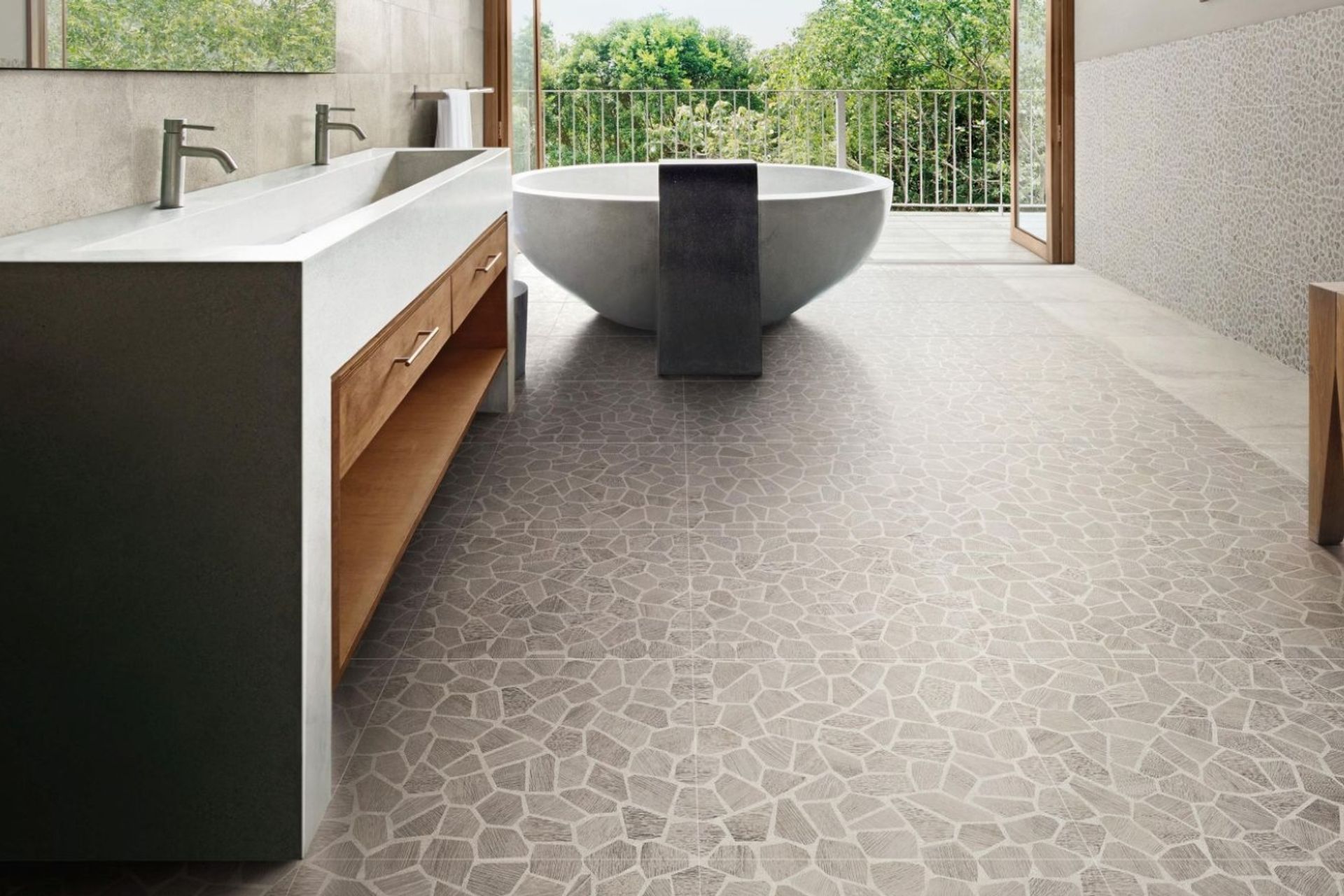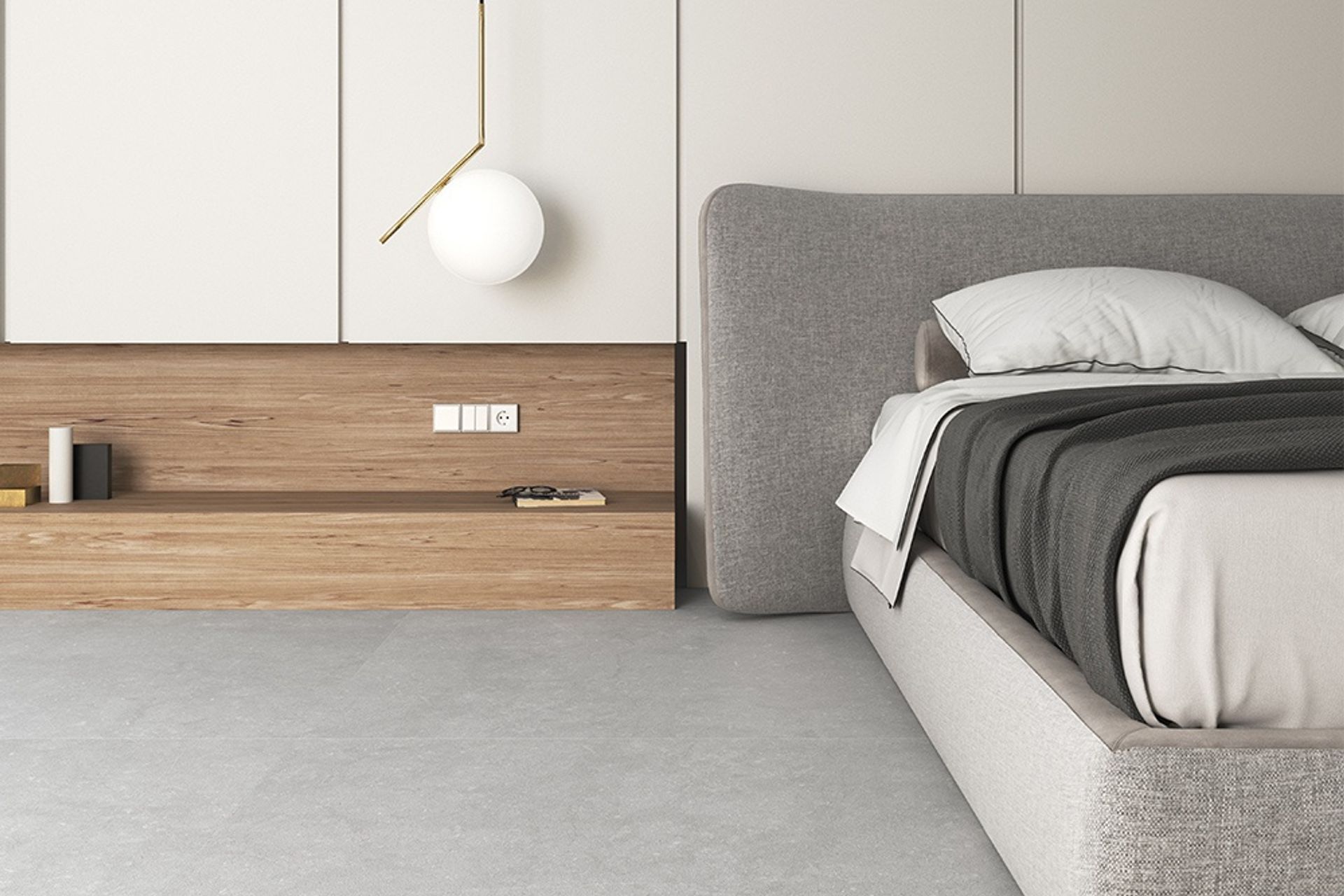The pros and cons of ceramic tile flooring for the modern home
Written by
18 June 2023
•
7 min read

Ceramic tile flooring has been a popular choice for homeowners in New Zealand for many years, especially in spaces like the kitchen, laundry and bathroom. It is a robust form of flooring, that offers great design versatility too. However, with many competing options, it pays to know all its characteristics and qualities before making the final call for your home.
Advantages of ceramic tile flooring
There are many positives to begin with when looking closely at ceramic tile floors, many of which will be known to you but a few might surprise you.
1. Durable and long-lasting
Ceramic tile floors are incredibly robust and durable making them great for both residential and commercial settings. They can withstand high foot traffic and are resistant to stains, scratches and wear. With natural longevity, there’s no reason ceramic tiles won’t last a lifetime with minimal maintenance and care.
2. Versatile and easy to maintain
Ceramic tiles are extremely versatile and can be used on the floors, as discussed here, but also on the walls, ceiling, countertops and in outdoor settings. This presents all sorts of interesting opportunities for mixing and matching your decorating style. On top of this, you can get glazed ceramic tiles which are very easy to maintain with occasional sweeping and mopping and they won’t trap any allergens either.
3. Plenty of designs and styles
There’s a huge range of designs and styles in the New Zealand market, meaning you can explore any aesthetic you desire. Variations include sizing, colour, and pattern — you’ll even find differently shaped ceramic tiles like square, rectangular and even hexagonal options.
Related article: Stunning bathroom tile ideas from beautiful homes in New Zealand

4. Water-resistant and hygienic
One of the reasons why ceramic tiles are so popular for the kitchen, bathroom and laundry rooms is because of their strong water resistance and natural resistance to bacteria, mould and mildew thanks to their non-porous texture. Proper installation is required for the former, ideally from experienced tile installers, but when done so, there are few better alternatives on these aspects.
5. Underfloor heating compatibility
One of the more recent advantages of ceramic tiles is their compatibility with modern underfloor heating systems, something that is becoming increasingly popular in new homes in New Zealand. This is because ceramic tiles are great conductors of heat, allowing your floors to become toasty underfoot in no time at all.
Related article: Electric or water underfloor heating? A comparison of comfort and efficiency
Disadvantages of ceramic tile flooring
As with any type of flooring, some things about ceramic tiles might not make them the best choice for your project. These may or may not be relevant to your own situation but should be addressed all the same.
1. Can be expensive to buy and install
The cost of ceramic tiles for flooring can vary, depending on a number of factors like branding, size, quality, the number of tiles ordered etc. They tend to be priced higher per square foot than alternatives like vinyl and laminate but are usually less expensive than natural stone tiles. Installing tiles is a labour-intensive job, however, requiring the expertise of an experienced tiler for the best results. You’ll need to get quotes and factor this into your budget when considering it as an option.
2. Cold surface during the winter months
As discussed earlier, ceramic floor tiles conduct heat very effectively. While this allows them to warm up quickly, it can also make them cold to the touch with no heating system installed. This is obviously more of a concern if you live in an area that experiences cold winters, however, the solution of underfloor heating will help warm the tiles up. Other options are to use area rugs or bath mats when required.
3. Grouting can stain
The grout lines between tiles are porous in nature which makes it susceptible to staining and the accumulation of dirt and grime. Proper sealing can help mitigate this but they will need to be cleaned properly every now and again to keep them looking their best.
Related article: How to choose kitchen wall tiles that look great and last

Maintenance tips for ceramic tile flooring
Having covered the advantages and disadvantages of ceramic tiles, you might also wonder what's involved from a care and maintenance perspective, so we've included a few tips below to paint a clearer picture.
1. Regularly sweep and mop your ceramic tile flooring
As with any type of flooring, you should regularly clean it as part of your home’s cleaning routine to keep it at its best. For ceramic flooring, using a soft-bristle broom or a vacuum with an attachment for hard floors will be more than enough to remove loose dirt and dust from its surface. Mopping with a mild, pH-neutral cleaner will also prevent damage to the tile surface and grouting.
2. Place rugs or mats in high-traffic areas
Another recommendation, already briefly mentioned, is to use rugs or mats in high-traffic areas. This is good for warmth in the colder months but will also protect the tiles. It’s not completely necessary but is a good precautionary measure to take to ensure their longevity.
3. Seal tiles on a regular basis
For tiles installed in moist environments like the bathroom, laundry, kitchen or outdoor settings, the best practice is to seal these regularly, often every 1 - 3 years. This will depend however on the manufacturer's advice as some options, like high-quality glazed tiles, might not require it at all so it pays to check. For unglazed tiles, it will offer a bit extra all-around protection and prevent water seepage and the damage that can occur from that.

Other considerations before installation
Last but not least, there are a few final things to take into consideration, besides the points already discussed, before making your decision. These aren't necessarily pros and cons but are important nevertheless.
1. Suitability of the area
Tile flooring is often chosen for particular areas of the home, like the kitchen, bathroom and toilet for good reason. The water-resistant properties of a ceramic floor tile and its tough surface make it an ideal flooring solution. It is, however, less common in bedrooms and communal areas where a softer surface is generally preferred. The suitability of tiles is also dependent on the quality and condition of the subfloor beneath it. It needs to be clean, level and structurally sound or you will likely have issues with cracking and unevenness further down the line.
2. Size and layout
The size and layout of your tiles are important and your decision should be made in the context of your space as a whole. Certain design rules can also help guide you, for instance, large tiles can make a space feel more open and spacious. Small tiles, on the other hand, allow you to add more detail to your design which can help you achieve a more decorative look and something that is unique to you.
3. Picking the right professional
The success of your tile flooring, no matter what the type, will be largely determined by the calibre of the installation. Picking the right professional for the job is therefore crucial to having tiles installed properly. Consider only the best tiling professionals that service your area with an extensive track record and portfolio of completed projects. Discuss your project with them in detail and get quotes to plan appropriately.
Related article: A guide to selecting the right tile size for your floors

Ceramic tile flooring: pros and cons covered to help you choose
With the advantages and disadvantages of ceramic tiles comprehensively covered as well as a few other useful snippets of information, you're hopefully in a great position to make an informed decision for your project. As you can see, a ceramic tile floor has many things going for it but you need to be absolutely sure about the qualities you want in your flooring as well as the requirements you need met.
Discover an extensive range of high-quality floor tiles on ArchiPro
(This article was updated on the 13th November 2024)